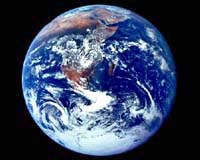
 |
Tammar or scrub wallaby (macrupus eugenii) have largely disappeared from the Australian mainland but hundreds of them have for over a century lived on Kawau Island, north of Auckland, where they are regarded as pests for the way they consume local vegetation.
They were bought to New Zealand in 1852 by British Governor George Grey who had just left South Australia where he held the same post. He also brought bush-tailed rock wallabies (petrogale penicillata), zebras and antelope but only the wallabies remain.
Tammar, which in Australia live on Kangaroo Island, are regarded as vulnerable, while rock wallabies are critically endangered in their New South Wales homeland.
The Herald report said the Department of Conservation (DOC) wants to have Kawau wallaby free by 2005 but after Australian scientists discovered the Kawau tammars belonged to an extinct sub-species it was decided to fly a group across the Tasman sea rather than shoot them.
It is not known how many wallabies there are on Kawau, the Herald said, but they are believed to run to thousands and not everybody is happy to see them go.
"It would be sad to see them all go -- they're a big tourist attraction," trapper John Stephen told the newspaper.
One expert drew on a notorious quote from former prime minister Robert Muldoon who said when New Zealanders leave for Australia, it raises the average IQ of both countries.
DOC official Don Stewart said of the wallaby export: "Its a bit like that old Muldoonism -- the project raises the biodiversity of both countries."
The biggest environmental problem for New Zealand is also another Australian, bush tail possums (trichosurus vulpecula) which are protected in their homeland but their 70 million here are devastating indigenous forests.
TERRA.WIRE |